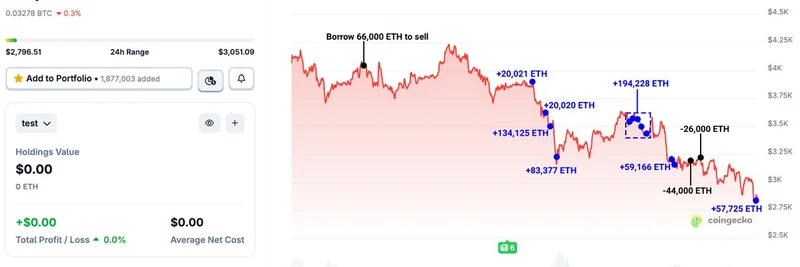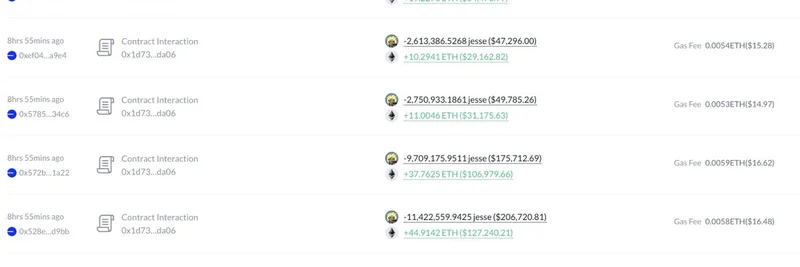In the ever-volatile world of cryptocurrency, big players—often called "whales"—can sway markets with their moves. Recently, a notable Ethereum whale, dubbed #66kETHBorrow, has been making headlines by continuing to stack ETH even as prices slide. According to on-chain data tracker Lookonchain, this investor just snapped up another 57,725 ETH, worth about $162.77 million, bringing their total holdings to 432,721 ETH valued at roughly $1.21 billion.
This isn't just pocket change. The whale has borrowed a whopping $602.6 million in stablecoins like USDT and USDC from Aave, a popular decentralized lending platform. Aave allows users to borrow assets by collateralizing others—in this case, likely using ETH itself in a leveraged position. It's a high-risk, high-reward strategy: if ETH's price rebounds, the gains could be massive, but a further drop might trigger liquidation, where the collateral is sold off to cover the loan.
Background on the Whale's Activity
This latest buy comes on the heels of speculation that the whale might be unwinding their position. Just a few days ago, Lookonchain reported that the investor withdrew 177,000 ETH ($561.3 million) from Aave and deposited 44,000 ETH ($140.2 million) into Binance, a major centralized exchange. At the time, with an average purchase cost around $3,437 per ETH, they were sitting on unrealized losses of about $125 million as prices hovered below $2,800.
But instead of selling out, they're doubling down. The on-chain transactions show multiple deposits to Binance hot wallets and interactions with Aave's Wrapped Token Gateway, indicating ongoing accumulation. You can check the full thread on X for more details here.
What This Means for Meme Tokens
While this is primarily an ETH story, it has ripple effects on the meme token ecosystem, much of which lives on the Ethereum blockchain or Layer-2 solutions like Base or Arbitrum. Meme coins—think Dogecoin-inspired tokens like PEPE or SHIB—often thrive on hype, liquidity, and low gas fees.
First off, if this whale's bet pays off and ETH prices recover, it could boost overall market sentiment. Higher ETH values mean more capital flowing into DeFi and NFTs, which often spills over into meme projects. Whales like this one provide liquidity that keeps the ecosystem humming, potentially stabilizing gas fees during volatile periods.
On the flip side, heavy borrowing on platforms like Aave increases systemic risk. A liquidation event could flood the market with ETH, driving prices lower and making transactions more expensive due to network congestion. For meme token traders, who often operate on thin margins, this could mean higher slippage and reduced profitability.
Moreover, whale activities often signal broader trends. If big investors are accumulating ETH despite the dip, it might encourage retail traders to hold or buy meme tokens tied to Ethereum's narrative, like those poking fun at DeFi or whales themselves. Keep an eye on tokens with whale-themed lore—they could see a pump from the buzz.
Key Takeaways for Blockchain Practitioners
- Leveraged Positions: Borrowing to buy more assets is common in crypto but amplifies risks. Always monitor your health ratio on platforms like Aave to avoid liquidation.
- On-Chain Monitoring: Tools like Lookonchain help spot whale moves early. For meme token hunters, this can be a signal to watch for market shifts.
- Market Impact: ETH's price directly affects gas costs, which in turn influence meme coin launches and trading volumes.
As the crypto space evolves, stories like this remind us that behind the memes and tokens are sophisticated strategies driving the market. Whether you're a degen trader or a long-term holder, staying informed on whale activities can give you an edge in navigating the wild world of blockchain.
For more insights into meme tokens and crypto trends, explore our knowledge base at Meme Insider.


